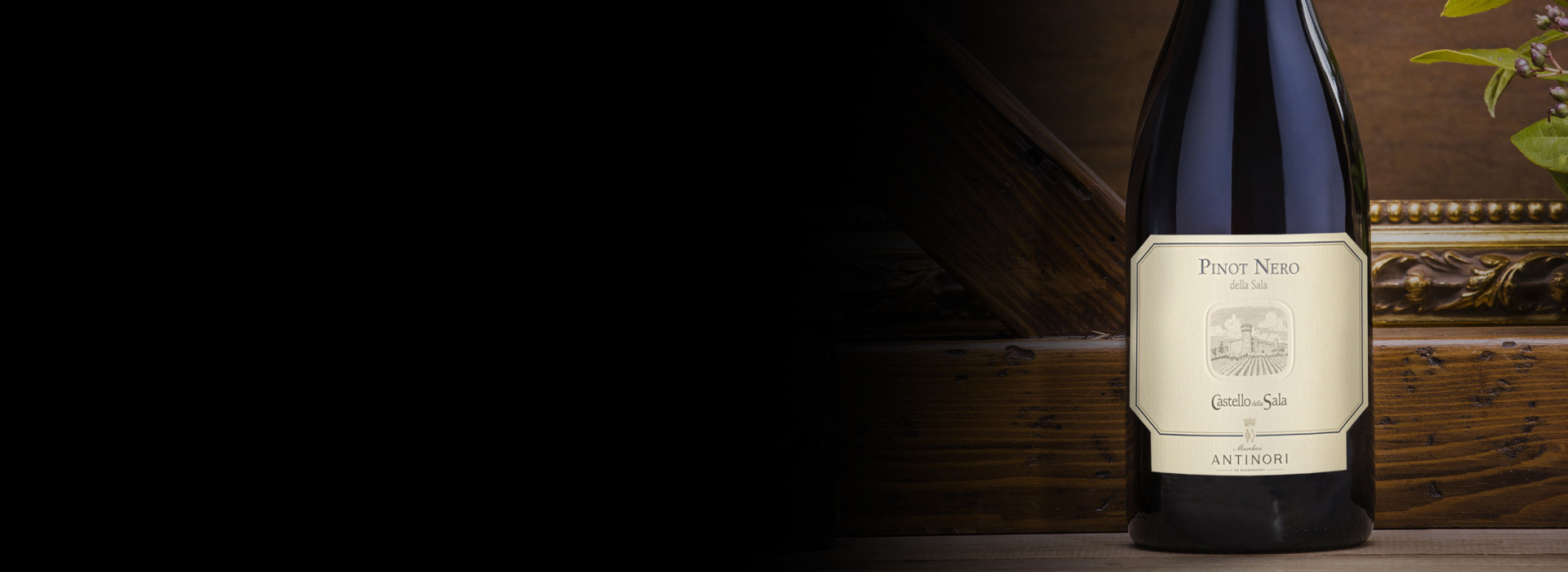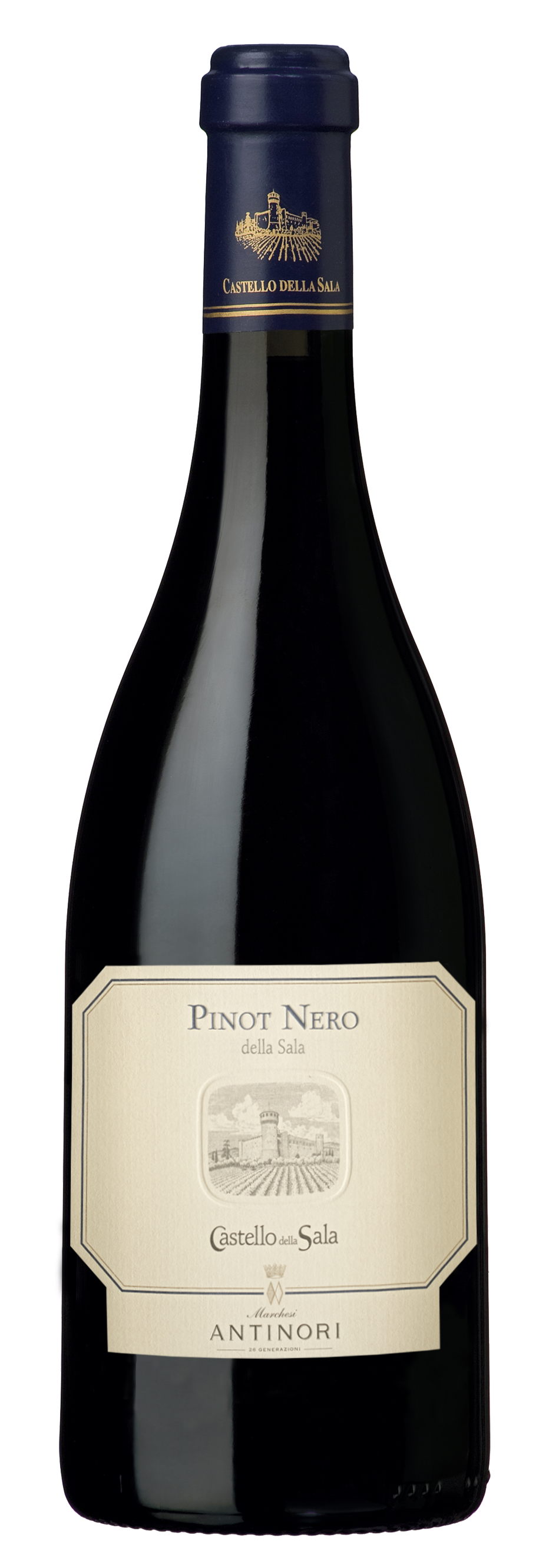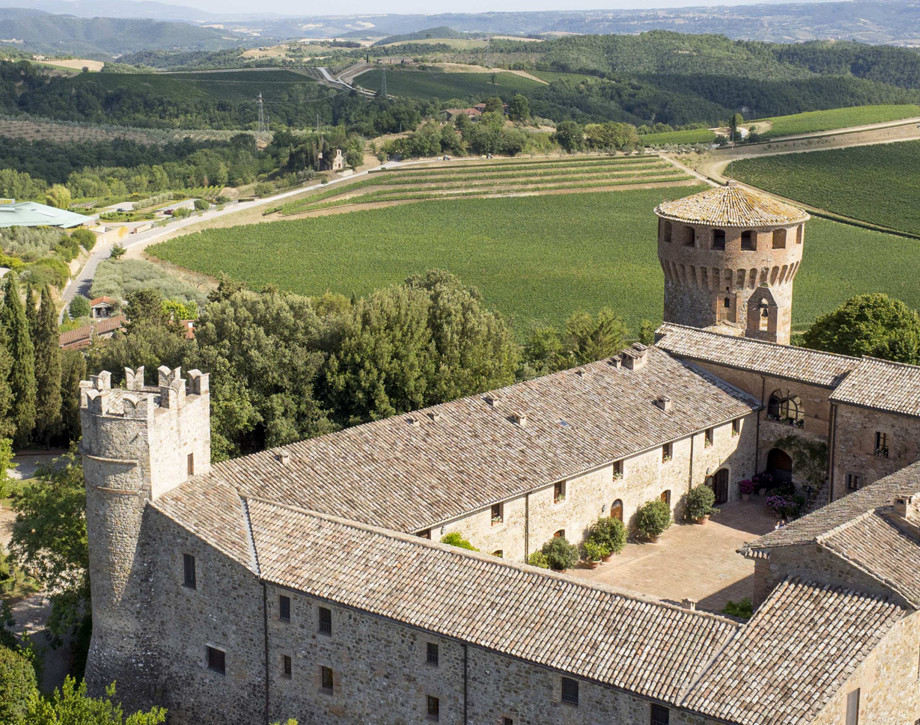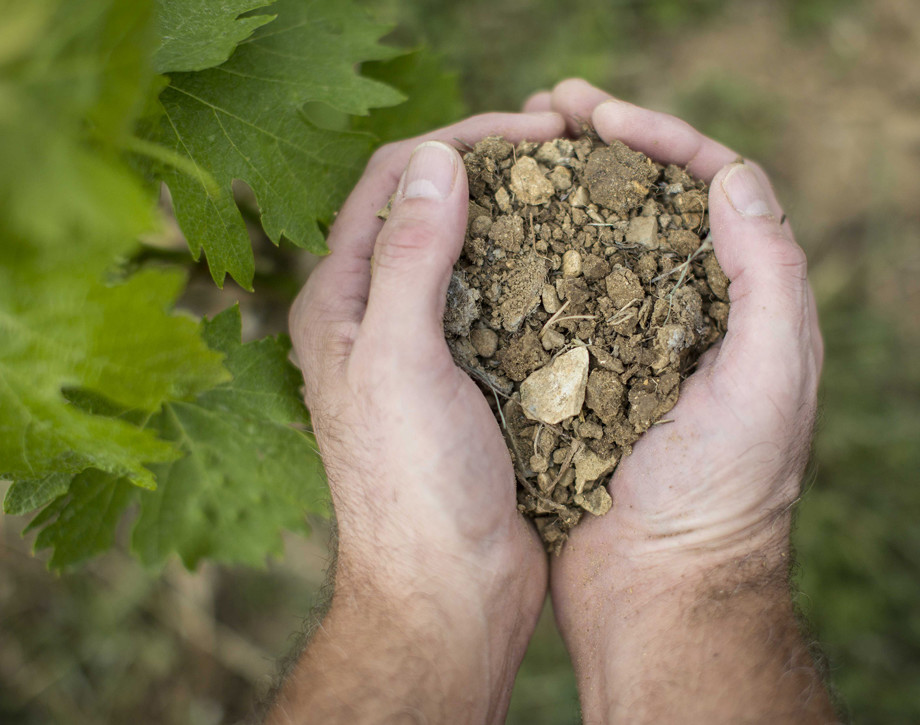Pinot Nero della Sala

The Wine
The first vintage to be produced was the 1990 vintage. The wine is made entirely with Pinot Nero grapes and is considered Cervaro’s alter ego: together they represent the two different expressions of Castello della Sala’s complex and refined spirit. Four hectares (10 acres) of Pinot Nero vineyards sit at an altitude of 400 meters (1312 feet) above sea level on calcareous soils rich in fossils with sedimentary sands from the Pliocene epoch.
Historical Data
The ten acres (four hectares) of Pinot Noir grapes at the Castello della Sala estate are situated at an altitude of over 1300 feet (400 meters) above sea level on calcareous soils rich in marine fossils which alternate with strata of sedimentary sands from the Pliocene epoch. The wine was first produced in 1990. Castello della Sala is a fortress erected in the 14th century located approximately ten miles (18 kilometers) from the city of Orvieto and was acquired by the Antinori family in 1940.

The Wine
The first vintage to be produced was the 1990 vintage. The wine is made entirely with Pinot Nero grapes and is considered Cervaro’s alter ego: together they represent the two different expressions of Castello della Sala’s complex and refined spirit. Four hectares (10 acres) of Pinot Nero vineyards sit at an altitude of 400 meters (1312 feet) above sea level on calcareous soils rich in fossils with sedimentary sands from the Pliocene epoch.

A red amidst whites
At Castello della Sala, an area historically important for white wines, Pinot Nero offers an authentic and typical expression of its variety with a strong territorial character.
Winding vineyards
The 4 hectares (10 acres) of Pinot Nero grow along the hillsides shaping the landscape into a series of sinuous terraced vineyards.
Understanding nature
The particularly hot climate of Castello della Sala has forced agronomists to invent new ways to protect the grapes from the hot summer sun. The vines’ shoots are allowed to grow in length and are then folded over the plant so its leaves can shade the Pinot Nero grape clusters.
Climate
The 2014 vintage was characterized by a mild winter with temperatures above seasonal averages and by abundant rainfall. Cold weather did not return in the spring, but frequent precipitations did continue. Summer was, on the whole, cool with rainfall slightly above seasonal norms, factors which delayed ripening and harvesting by approximately fifteen days. Picking, in fact, began during the second half of September.
Vinification
After destemming and a soft pressing, the must went into small and conical stainless steel fermenting tanks where it fermented on its skins for approximately a week. The fermentation took place at 79° Fahrenheit (26° centigrade) and was completed in French oak barrels, where the wine was also put through a complete malolactic fermentation. The barrel aging lasted ten months, after which the wine was bottled. The wine was marketed after a period of bottle aging in the historic Castello della Sala cellars.
Historical Data
The ten acres (four hectares) of Pinot Noir grapes at the Castello della Sala estate are situated at an altitude of over 1300 feet (400 meters) above sea level on calcareous soils rich in marine fossils which alternate with strata of sedimentary sands from the Pliocene epoch. The wine was first produced in 1990. Castello della Sala is a fortress erected in the 14th century located approximately ten miles (18 kilometers) from the city of Orvieto and was acquired by the Antinori family in 1940.
Tasting Notes
The wine, ruby red with light garnet highlights, shows a nose of violets and berry fruit. The palate is balanced with a notable suppleness of texture and tannins and an elegant complexity, which fuses the spices and the fruit. The finish and aftertaste are long and savory.
Scheda

Castello della Sala
Castello della Sala is located in the Umbria region, not far from the Tuscan border, about 18 kilometers from the historic city of Orvieto. The Medieval castle’s property extends over an area of 600 hectares (1482 acres), 229 hectares (495 acres) are planted with vineyards at an altitude that varies between 220 and 470 meters above sea level (722/1541 feet) on the gently rolling hillsides that characterize the beautiful countryside in this area. Castello della Sala is the perfect place for growing white varieties. The vines grow in clay and calcareous based soils, rich in fossil shells, and they are well exposed to the rising of the sun with an excellent difference of temperature between day and night. The one exception to the rule is Pinot Noir, the only red variety that has found in this area ideal growing conditions to best express its full potential.

Soil
Calcareous soil with fossils and sedimentary sand dating back to the Pliocene period.


















